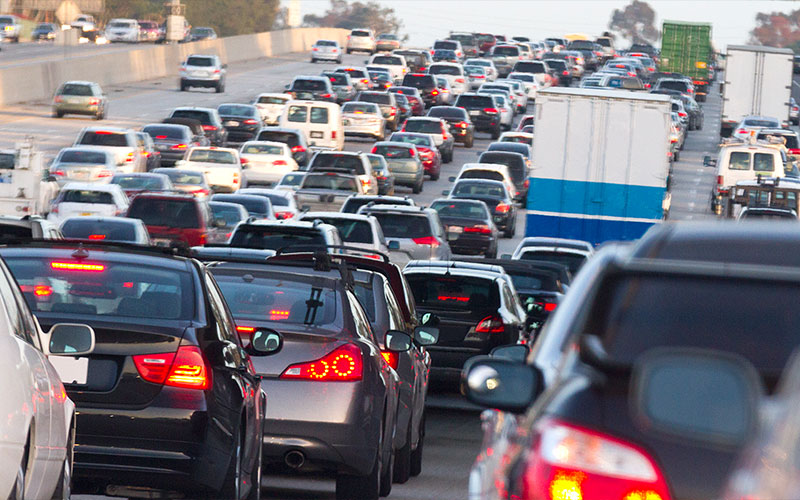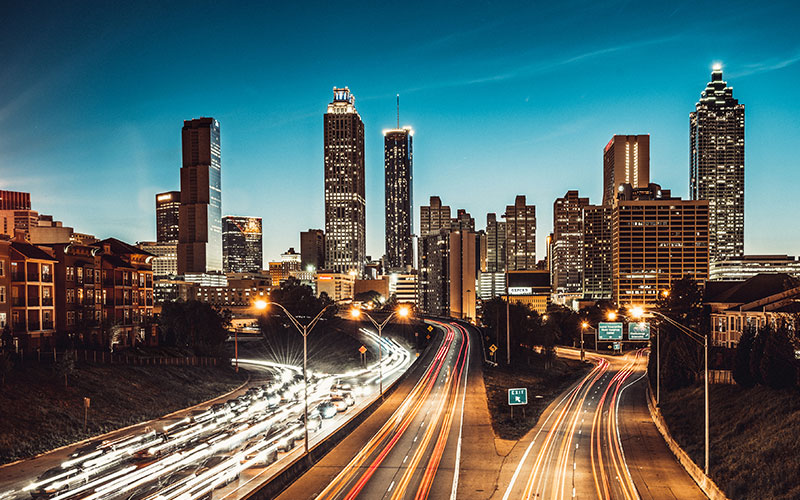Your Guide to Urban Driving
Our guide to urban driving gives some ways to escape the frustration and fear of driving around in the city as well as some driving etiquette.
Urban Driving Tips and Driving Etiquette

One beautiful Southern California fall evening, I left the office on Wilshire Boulevard, in Los Angeles, for the trip back home to Orange County – a 30-mile drive. Three hours later, I was home. That’s driving in LA for you and in most urban driving settings. Although, you may not experience epic LA-style traffic, you’ll find heavy traffic to be near the top of your frustration list.
If you don’t live in a city or haven’t recently visited, you can lose the perspective of its size of population and square miles. And what you thought was a short 20-mile drive can turn into a two-hour misery fest with traffic. Hearing about it is one thing, but experiencing it is another. But don’t let traffic and other horror stories keep you from taking a trip to enjoy the city. It just takes planning, understanding, and a lot of patience to navigate highways safely and confidently.

While you plan some summer trips, we have a guide to urban driving that will get you some helpful tips and big city driving etiquette. And while you’re in your car or a rental car, you can patiently remember the tips of how to navigate the perils of urban driving safely.
You Need a Local Tour Guide

Today, we live in a time where you have to work hard to get lost. But maybe you still haven’t hooked up to Waze, Google Maps, or Apple Maps. When you visit any new area, it’s always good to have one of these phone app “tour guides” to show you around. Even those who live in Southern California use these apps to stay out of or anticipate traffic difficulties.
Before taking your trip, take some time to download and play with one of the navigation apps. We recommend Waze since it provides standard estimated times, suggested times to leave, and times when it’s most congested (for planning). It also allows you and others to offer location info on debris, stranded cars, and road obstructions.
Freeways Aren’t Always Fastways

In many cities, the freeways can have up to 8 lanes, so be prepared for the massive raceway’s speeds and traffic. But it’s most likely speed won’t be your big problem. You could also be stuck in the middle during an enormous traffic jam and no way to escape. It might be good to stay in the right lanes and ask Siri, Google, or Waze to reroute you down some side streets. Side streets can often be faster than the freeways.
Left Lanes are Fast Lanes
When traffic is lighter, most people will drive faster in the far left lanes – especially carpool lanes. So be careful being a rolling roadblock. If you run slow in those lanes, you’ll be on the receiving end of some frustration. The driving etiquette best practice is to stay out of trouble by moving to the right.
Carpool Lanes

Many freeways will have a carpool lane, and as a reminder, more than one person will need to be in your car if you’re in the lane. Dogs don’t count. Also, be wary of the carpool lane’s solid or double lines. You can only enter and exit the carpool lane at designated areas. Deciding to slide in the carpool lane like a normal merger will cost you some of your vacation fund.
Some Turn Signals Don’t Seem to Work

Of course, follow proper driving etiquette and always use your turn signal, but watch out for other people on the road who won’t. Using your turn signal will warn people what your plans are and can prevent surprises to those behind you. Others may try and just slip in front of you without an ounce of caution during peak traffic times. Using your turn signal sounds like a simple task, but keep your wits about you while driving.
Always Look Ahead
While on the freeway, the further you can look down the road, the slower everything moves. Your brain doesn’t get overwhelmed with speed, and it can take in more information. You can also anticipate things happening and have time to slow down or change lanes in preparation.
Drive Courteously

Most of the problems, accidents, and frustrations you’ll encounter on the road will be caused by people trying to get ahead of other people. But you have a secret driving etiquette power, and it’s called being courteous. Your mom may have told you that just because someone else was doing something, doesn’t mean you have to follow them. She was right. When other people are losing their minds in traffic, you can keep yours at peace and carry on.
Location. Location. Location.

A realtor will often say, “Location. Location. Location.” The same mantra will work for your driving. If you’re going to spend lots of time at a theme park, the beach, or mountains, you can save yourself some struggle by staying close to that location. It will cut down drive time and possibly help you avoid freeways. However, if you visit with family and they live far away from the theme park, you’ll need to plan for the best time to leave.
Some Days are Worse Than Others
When you visit a city or metropolitan area like Los Angeles, there are days you know that traffic will be bad. Fridays will be the worst days for traffic, because people are headed out of town. You don’t want to be sitting for hours on the freeway on a Friday afternoon.
Parking

Now is an excellent time to download an app like ParkMobile. Many cities use this app, or others like it, to pay for parking and replenish your meter from your phone. These apps also have a timer that will let you know the meter time countdown. It helps you avoid having to walk back and forth to the car and keeps you from spending your vacation cash on a parking ticket.
When visiting the city, practice preventative parking and use a parking garage. When at the beach or mountains, use a paid lot. Yes, you’ll be spending more money in most instances, but the safety, convenience, and peace of mind will be worth it.
Enjoy Yourself

City driving is its own unique beast, and it can be quite different from driving in rural areas or the suburbs. Now that you know some heavy traffic driving etiquette and what to expect when going to an urban locale, don’t be afraid to get behind the wheel and tour your new home.









